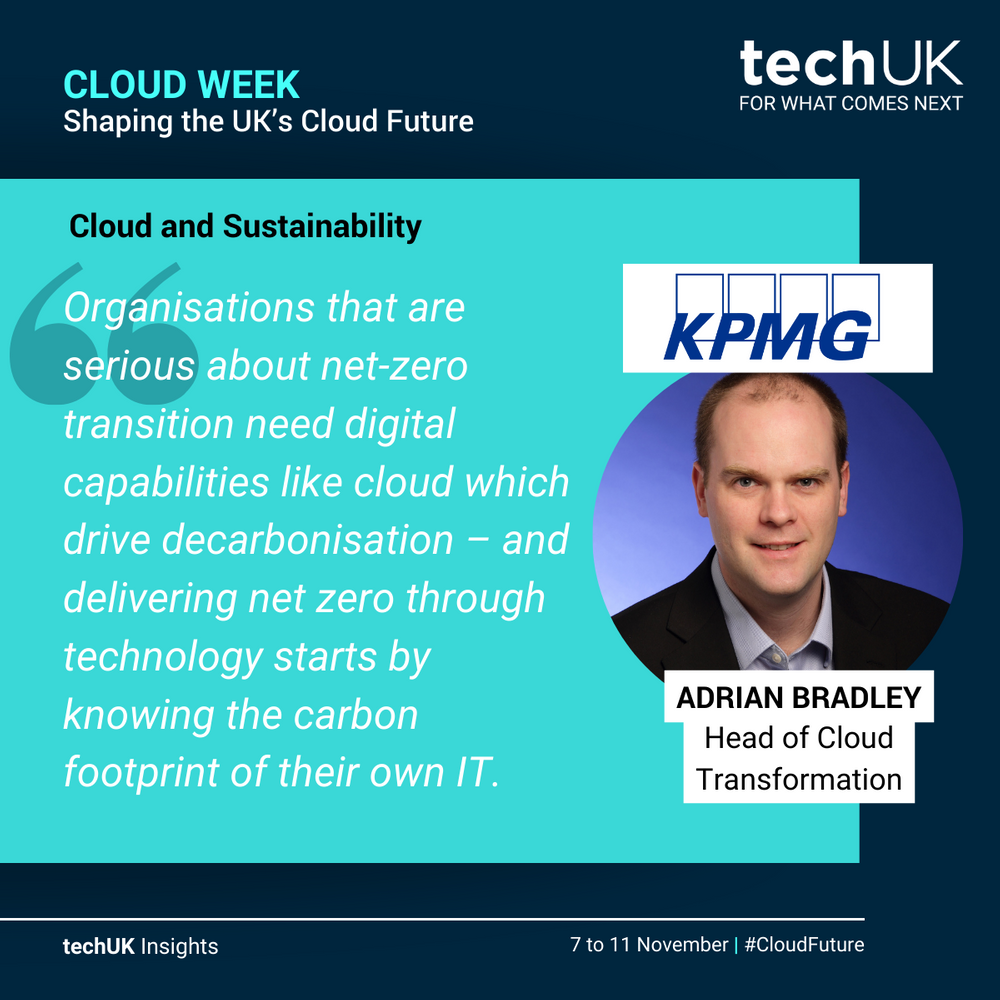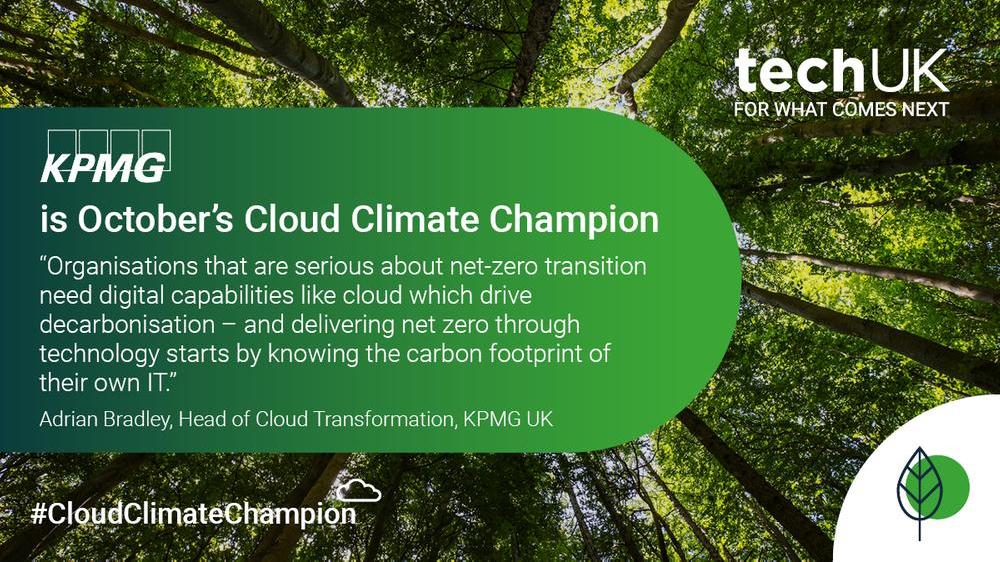What does sustainability in IT really mean? (Guest blog from KPMG)

Adrian Bradley, Partner | Amit Rathore, Associate Director | Ashish Joglekar, Cloud Transformation Architect - KPMG
Companies and governments are making increasingly bold commitments to fight climate change and improve the way ESG is governed and managed.
The sense of urgency around the crisis has driven closer engagement between corporate risk, strategy and sustainability teams and resulted in new ideas on how to drive carbon out of supply chains. In this context, how can organisations outperform the sector and deliver their IT more sustainably?
What does sustainability in IT really mean?
According to Harvey Nash Group Digital Leadership Report 2021, the technology sector’s contribution to global CO2 emissions is 5.9 percent and higher than that of the travel sector. With such high emissions, IT infrastructure has an important role to play in the pursuit of an organisation’s net zero goals. However, despite being one of the biggest contributors, only 22 percent of tech leaders are actively working to reduce their tech C02 emissions.
For many enterprises this is because of a lack of visibility on how their carbon footprint is impacted by the way their IT estate is set up, and how much they consume. In fact, there can be significant variations between the most and least carbon efficient footprint – and often the most carbon-efficient estates are also the most cost-efficient.
Measuring sustainability for IT infrastructure can be complex. It requires:
- Emissions visibility
An understanding of how the architecture and product choices, coupled with volume of consumption, drives emissions.
- Decision enablement
Visibility is meaningless unless it’s connected to decisions on where IT workloads are placed. These decisions range from strategic hosting choices taken at scale, infrequently, to small-scale workload placement decisions made often by junior engineers.
- Appropriate skills
Re-skilling architects and engineers who historically have not understood the correlation between their architecture decisions and carbon footprint.
- Central management platforms
The ability to gather data from many different places in your estate, and deliver technical interventions (ideally in an automated fashion) across your estate. Without this, insight is not actionable because it’s too costly and impractical to execute.
Enabling your organisations sustainable IT transformation
The KPMG Transformation Impact Modeller (TIM) is a state-of-the-art tool which has helped IT organisations make hosting decisions around billions of pounds worth IT infrastructure spend. It now includes a sustainability module, helping enterprises make informed decisions on their carbon emission strategy. TIM helps clients build robust business cases around cloud or on-premise transformations, develop actionable roadmaps, and reach effective decisions on hosting.
We can shape your cloud adoption strategy based on the environmental impact of your IT infrastructure. We help provide actionable insights which underpin carbon emission savings, enabling you to build and deliver more sustainable IT. The TIM Sustainability module helps achieve your sustainability goals by offering cloud (and on-premise) vendor agnostic approach without any invasive access to your IT environment.
Key Features
- Visibility
The engine ingests data on your IT estate, cloud environments and data centres, enhances it to overcome incomplete or poor quality data, and analyses the sustainability impact of different scenarios (as well as their cost, risk profile and required effort to deliver).
- Decision Support
The interactive dashboards offer a customised, dynamic view of current consumption and target state across all major cloud (and significant on-premise) service providers. These dashboards have been developed over the past 3 years to deliver the information needed at executive, project management and engineering levels to make important decisions on workload placement.
- Actionable Roadmap
The engine uses industry benchmarks and information unique to your estate to provide a customised migration plan tailored to short and long terms goals. This plan is based on a substantial amount of real-world data. It provides a data centre emission overview, identifying the difference between current emissions levels and ambition, performs comparative analysis of multiple cloud providers and logically groups workloads for migration.
Organisations that are serious about net-zero transition will develop and implement decarbonisation strategies that reduce emissions immediately and continue to do so in a sustained manner until the net zero goal is met. IT functions can contribute significantly to emissions management and reduction.
Cloud Week 2022
We bring you news, views and insights from the technology sector on what cloud computing can enable in the UK





